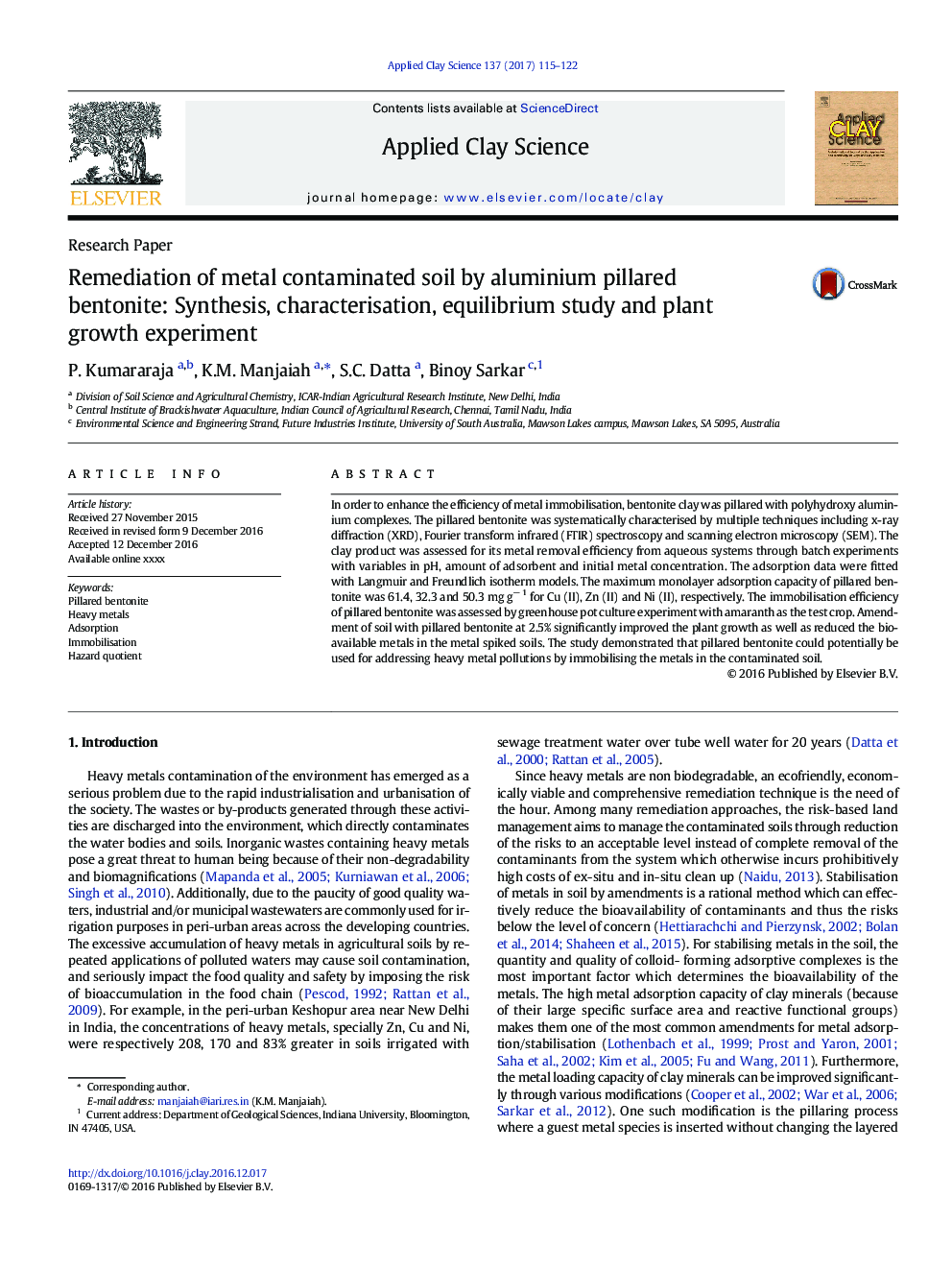| Article ID | Journal | Published Year | Pages | File Type |
|---|---|---|---|---|
| 5469035 | Applied Clay Science | 2017 | 8 Pages |
Abstract
In order to enhance the efficiency of metal immobilisation, bentonite clay was pillared with polyhydroxy aluminium complexes. The pillared bentonite was systematically characterised by multiple techniques including x-ray diffraction (XRD), Fourier transform infrared (FTIR) spectroscopy and scanning electron microscopy (SEM). The clay product was assessed for its metal removal efficiency from aqueous systems through batch experiments with variables in pH, amount of adsorbent and initial metal concentration. The adsorption data were fitted with Langmuir and Freundlich isotherm models. The maximum monolayer adsorption capacity of pillared bentonite was 61.4, 32.3 and 50.3 mg gâ 1 for Cu (II), Zn (II) and Ni (II), respectively. The immobilisation efficiency of pillared bentonite was assessed by greenhouse pot culture experiment with amaranth as the test crop. Amendment of soil with pillared bentonite at 2.5% significantly improved the plant growth as well as reduced the bioavailable metals in the metal spiked soils. The study demonstrated that pillared bentonite could potentially be used for addressing heavy metal pollutions by immobilising the metals in the contaminated soil.
Related Topics
Physical Sciences and Engineering
Earth and Planetary Sciences
Geochemistry and Petrology
Authors
P. Kumararaja, K.M. Manjaiah, S.C. Datta, Binoy Sarkar,
